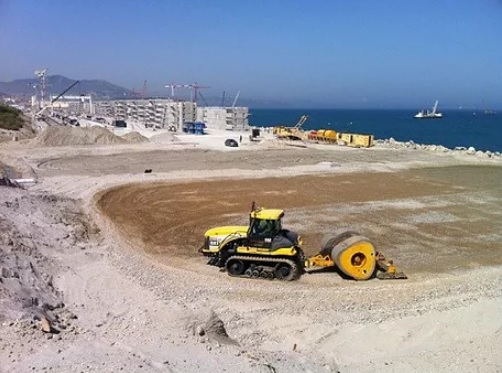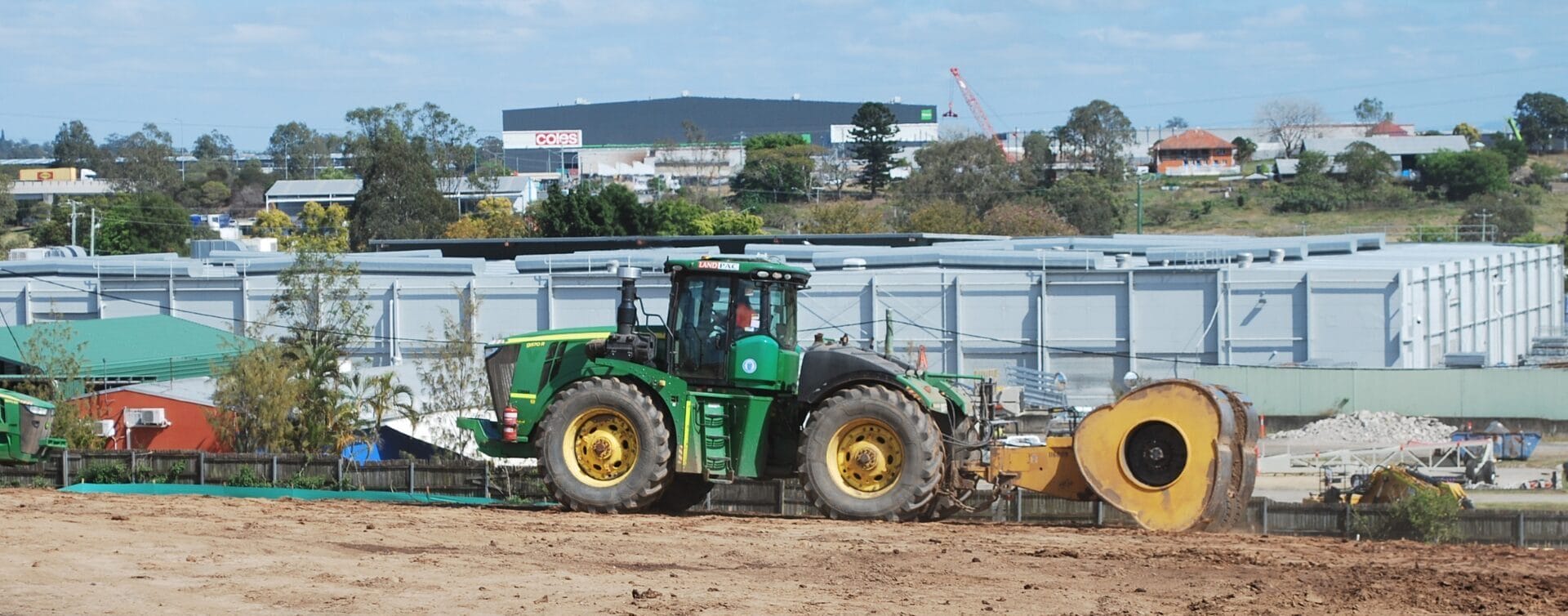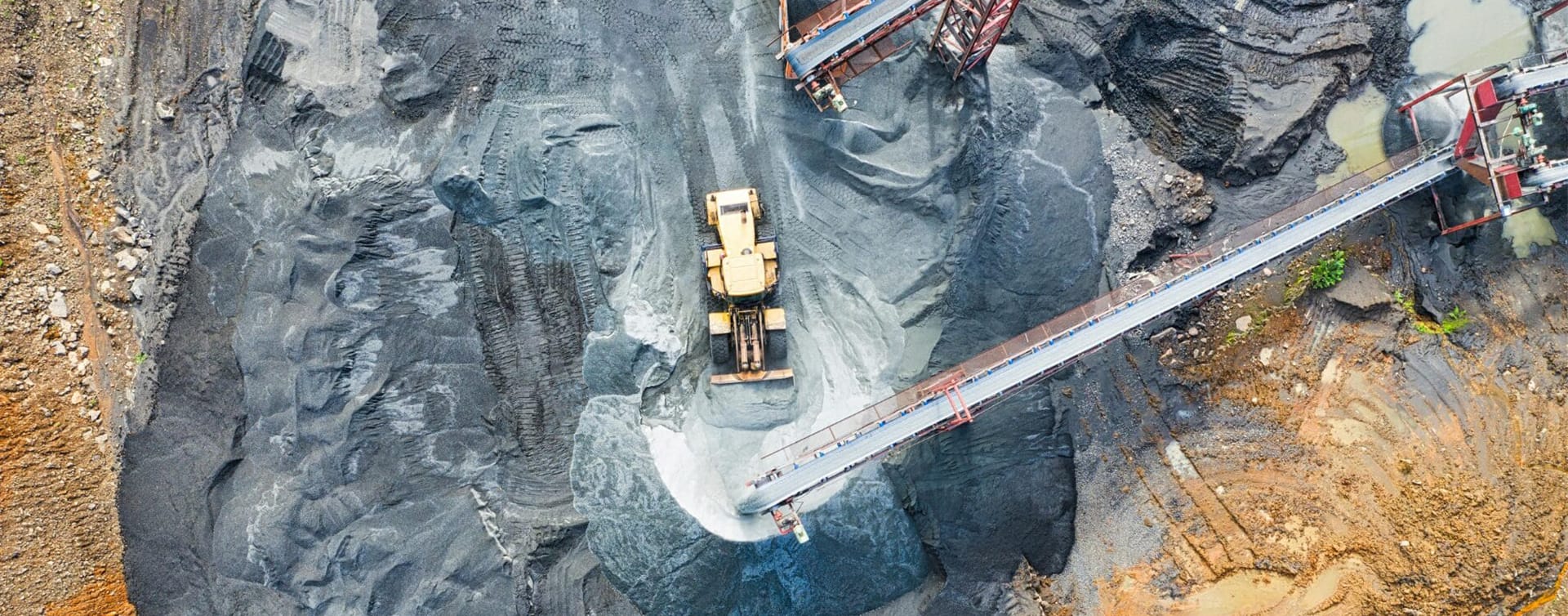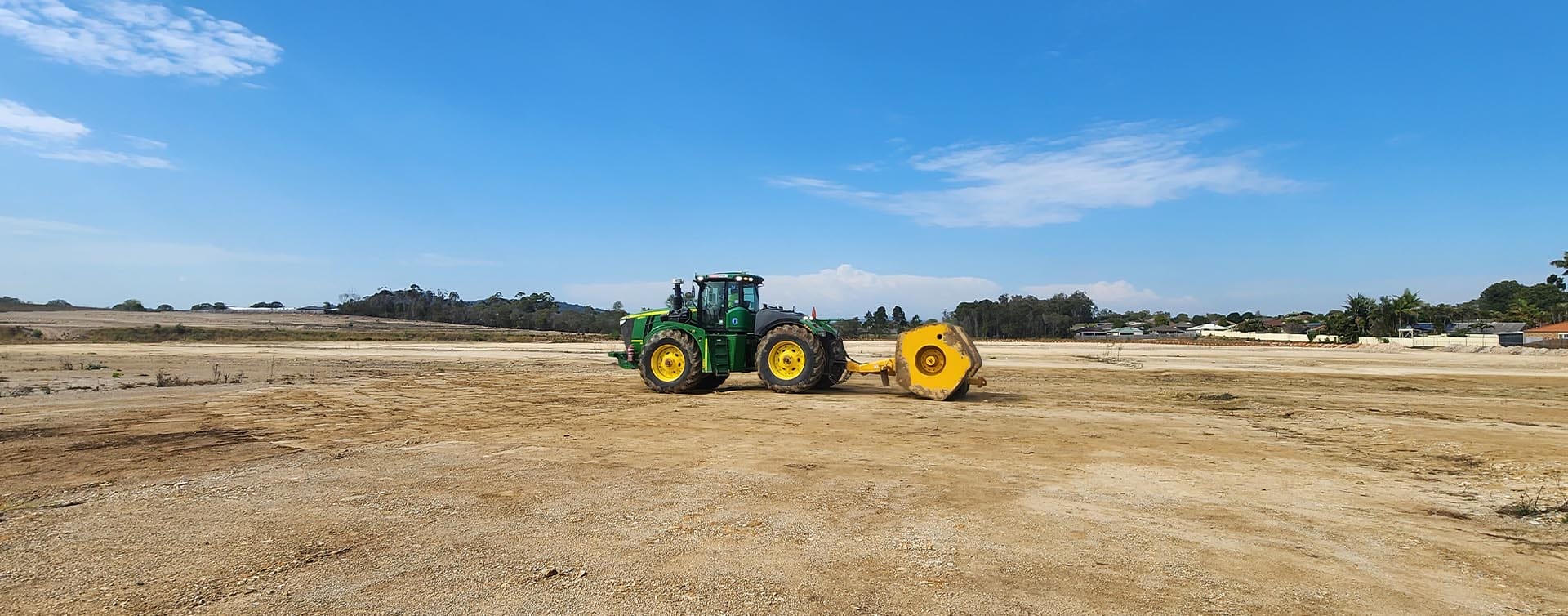Port Tanger Project
Project Overview
The Tanger MED 2 project, essential for the construction of a new container terminal in Morocco, required substantial dredging and backfilling over a 140ha area. Landpac’s High Energy Impact Compaction (HEIC) played a pivotal role in achieving the necessary ground stability for this major port infrastructure project.

Landpac's Solution
Landpac conducted trials using Impact Compaction for the upper surface layers, aiming to meet the stringent compaction criteria set for the project, including CPT Cone Resistance and Modulus specifications.
Challenges
Faced with the need to stabilise 5 million cubic meters of dredged “borrow material,” the project initially employed Deep Vibro Compaction (DVC). However, DVC proved less effective in the upper 2-3m of soil, necessitating an alternative solution for achieving the specified compaction levels.
Application of HEIC
Surface Compaction: HEIC was critical for compacting the top 2-3m of backfilled material, a layer crucial for the stability of the upcoming pavement construction.
Benefits
Enhanced Soil Stability: HEIC significantly improved the soil compaction in the critical upper layers, meeting and exceeding project specifications.
Optimised Material Use: The method allowed for effective utilization of dredged material, ensuring structural integrity.
Monitoring & Verification
The compaction process was rigorously monitored using Landpac’s soil response and continuous induced settlement systems, with CPT and Plate Load tests confirming the success of the compaction efforts.
The successful implementation of HEIC in the Port Tanger Project underscored its effectiveness in large-scale maritime construction, ensuring robust ground preparation and laying the foundation for the port’s future operational excellence.
Client: [Confidential]
Principal Contractor: [Confidential]
Ground Improvement Contractor: Landpac
Latest news

Uncontrolled vs Contaminated Fill | Why It Matters
Understand the difference between uncontrolled and contaminated fill, the risks of each, and how Landpac’s HEIC method delivers safe, stable ground.

High-Energy Impact Compaction in Australian Mining
From haul roads in WA to tailings dams in QLD, High-Energy Impact Compaction (HEIC) is reshaping ground improvement across Australia’s mining operations. Backed by Intelligent Compaction Measurement (ICM), HEIC delivers faster, deeper, and more reliable results, boosting safety, sustainability, and cost-efficiency in some of mining’s toughest conditions.

Understanding High Energy Impact Compaction (HEIC)
High Energy Impact Compaction (HEIC) revolutionises ground improvement with its ability to achieve superior soil density and stability. Unlike traditional methods, HEIC uses advanced rollers and compaction technology to penetrate deeper soil layers.
